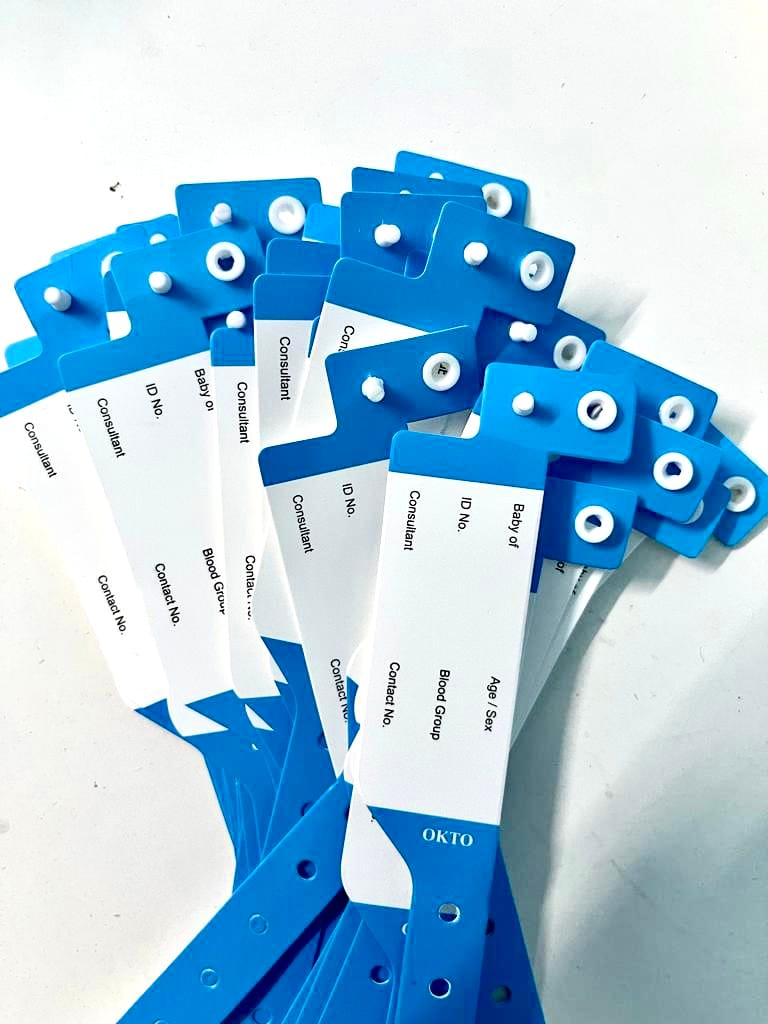Why Every Medical Facility Must Implement Patient Identification Band for Its Patients
Why Every Medical Facility Must Implement Patient Identification Band for Its Patients
Blog Article
Enhancing Safety: The Value of Patient Recognition Bands in Health Care
In the realm of medical care, the efficacy of individual identification bands can not be overemphasized, as they offer as a fundamental safeguard against misidentification and succeeding errors. As we discover the complex role of these bands, it becomes evident that their relevance expands beyond plain recognition, elevating concerns regarding best practices and future developments in individual security.
Summary of Patient Recognition Bands
Person recognition bands play a critical duty in making certain the safety and security and accuracy of client treatment in medical care settings. These bands, typically worn on the wrist or ankle joint, offer as an important tool for validating individual identity, thereby minimizing the risk of mistakes in treatment, drug administration, and other health care procedures. Made from sturdy products, client recognition bands often consist of important details such as the client's name, day of birth, clinical document number, and barcodes or QR codes for scanning.
The application of patient recognition bands is important in numerous healthcare settings, including healthcare facilities, outpatient facilities, and lasting care organizations. They contribute to an organized method in client monitoring, enabling medical care professionals to rapidly and properly identify individuals, especially in high-pressure scenarios where speedy decision-making is vital.
Furthermore, making use of these bands is straightened with governing criteria targeted at improving patient security - Patient Identification Band. By ensuring that each client's info is conveniently proven and conveniently accessible, healthcare carriers can keep a high requirement of treatment, minimize the incidence of damaging events, and foster a culture of safety and security within medical care organizations
Benefits of Accurate Identification
Accurate recognition is basic to boosting individual security and care quality in medical care setups. It offers as the initial line of defense against mistakes that could result in negative patient outcomes. By guaranteeing that each individual is properly recognized with trustworthy ways, such as patient identification bands, doctor can substantially reduce the risk of misidentification, which can bring about improper treatments, medication mistakes, and even medical mix-ups.
Additionally, accurate person identification facilitates reliable interaction amongst health care groups. When all team member can constantly identify people, they can share crucial details a lot more effectively, leading to far better coordination of treatment. This is particularly crucial in emergency scenarios where timely treatments are essential.
In addition, accurate recognition sustains conformity with regulatory requirements, therefore decreasing the threat of legal consequences for medical care facilities. It promotes trust fund in between individuals and health care carriers, as people feel much more safe and secure knowing that their identities are being secured.

Usual Challenges Encountered
Making sure effective person identification in healthcare settings offers an array of challenges that can endanger security and care quality. One substantial challenge is the irregularity in client populaces. Individuals may show up in a state of confusion or distress, making precise identification tough. Additionally, language obstacles can hinder efficient interaction, complicating the verification procedure.
One more difficulty is the dependence on human consider recognition treatments. Healthcare professionals may unintentionally advice overlook or misinterpret recognition protocols, particularly in high-stress atmospheres such as emergency situation departments. This can cause mistakes, consisting of the management of incorrect therapies or drugs.
Technical concerns also present obstacles. Although digital health record (EHR) systems are developed to enhance individual recognition, system blackouts or customer mistakes can disrupt the process. Additionally, the physical style of client ID bands can result in readability problems, especially in cases where bands are damaged or covered.
Finally, irregular training among staff concerning identification protocols can cause voids in understanding and method. Dealing with these challenges is important for enhancing patient security and making sure that identification bands offer their desired function effectively.
Ideal Practices for Application
To successfully execute client recognition bands in health care settings, organizations have to embrace a multifaceted approach that focuses on standardization, training, and technology integration. Standardization entails establishing clear methods for the style, application, and use of recognition bands across all divisions. This makes sure consistency and lessens the risk of mistakes linked to variations in band types or identifying approaches.


Training is necessary for all health care staff to guarantee they comprehend the significance of accurate patient recognition, exactly how to properly review and use identification bands, and the treatments to follow in situation of disparities. Regular workshops and correspondence course can strengthen this knowledge and advertise a culture of security.
Technology assimilation plays a critical role in improving the effectiveness of individual identification bands. Using barcode scanning or RFID modern technology can improve the recognition process, permitting for real-time verification of patient identifications. Additionally, electronic wellness record systems must be set up to include informs for inequalities between the identification band and individual data.
Future Trends in Client Safety And Security
As healthcare continues to advance, the emphasis on client safety is most likely to magnify, driven by developments in modern technology and a greater understanding of systemic dangers. Arising fads indicate a shift towards more incorporated systems that utilize information analytics, expert system, and artificial intelligence to boost patient identification processes. These innovations can aid identify possible safety concerns prior to they escalate, thus minimizing mistakes related to misidentification.
Moreover, the implementation of blockchain technology may reinvent exactly how patient information is safely shared among doctor, ensuring that identification bands are current and regularly precise. This will not just boost person safety and security however likewise assist in seamless communication across multidisciplinary groups.

Additionally, the expanding emphasis on customized medicine is anticipated to affect patient safety procedures. By including hereditary and this page demographic info into identification systems, health care experts can customize therapies extra effectively, reducing the dangers of negative responses as a result of misidentification.
Verdict
In conclusion, patient identification bands function as an important element in enhancing safety and security within healthcare environments. By helping with precise client identification, these bands considerably lower the risk of mistakes connected with misidentification, unacceptable therapies, and medicine administration. In spite of challenges in implementation, adherence to best techniques and the assimilation of arising innovations Get More Information can better improve their performance. Inevitably, the continued emphasis on durable recognition procedures will add to better individual end results and total security in health care settings.
In the world of health care, the efficacy of person recognition bands can not be overemphasized, as they offer as an essential safeguard versus misidentification and subsequent mistakes.Patient recognition bands play an important role in making certain the safety and precision of patient treatment in health care setups. Made from long lasting products, client recognition bands usually consist of essential info such as the person's name, date of birth, clinical document number, and barcodes or QR codes for scanning.
By guaranteeing that each person is correctly determined via dependable ways, such as patient identification bands, medical care service providers can dramatically minimize the danger of misidentification, which can lead to improper therapies, medication errors, and even surgical mix-ups.
In verdict, patient identification bands offer as a vital component in improving security within medical care settings. Patient Identification Band.
Report this page